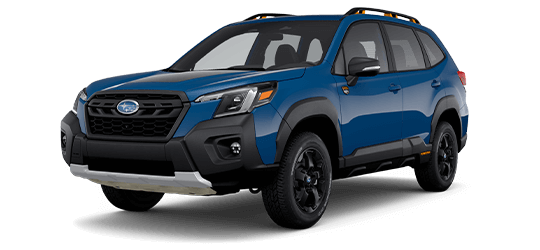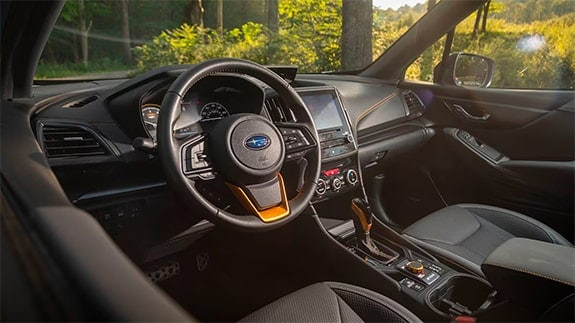The difference that matters between the 1970 Hotchkis E-Max Dodge Challenger and the 2010 Dodge Challenger SRT-8 can be demonstrated as easily as turning each one's ignition key right here in our driveway.
It's here, in suburban Orange County, California, where the homeowners association gets uptight if window trim is the wrong shade of tan, that we come to fully appreciate the difference between these cars. You see, the association's covenants, codes and restrictions might dictate the minutiae of trim color and lawn primping, but they utterly fail to address the unmitigated badass-ness of the car one parks in his driveway. Or what it sounds like when it's fired up at sunrise.
So it is with great care and respect for our neighbors that we carefully and quietly roll the old yellow beast that is the 1970 Dodge Challenger down our driveway and into the center of our cul-de-sac before pumping the throttle and keying the ignition. All eight cylinders shatter the morning's peace in a virtually unmuffled celebration of retro muscle and lumpy idle.
Window shades rise. Doors open. Eyes roll. We can smell the disapproval. And it smells like unburned hydrocarbons. Despite a cold engine, we leave quickly.
By comparison, the 2010 Dodge Challenger SRT-8 escapes unnoticed when we start it up the following morning.
The Basics
So what we have here are two legends — one old, one new. Despite 40 years of automotive progress, both share a similar powertrain philosophy: a pushrod V8 driving a manual transmission which in turn drives the rear wheels via a limited-slip differential.
With a 6.1-liter V8 good for 425 horsepower and 420 pound-feet of torque, a six-speed manual transmission and independent rear suspension, the 2010 Dodge Challenger SRT-8 is a thoroughly modern pony car. The Hotchkis-modified 1970 Dodge Challenger, however, employs a period-correct 340-cubic-inch (5.6-liter) V8 with three two-barrel carburetors. The powertrain tweaks of this Hotchkis car are completed by a Tremec five-speed manual transmission and 8.8-inch rear end with Chrysler's 3.55:1 Sure-Grip limited-slip differential.
We're told the Hotchkis E-Max Challenger's engine is stock internally, but we have our doubts based on its lumpy idle. Headman headers, Flowmaster mufflers and MSD ignition are the only obvious external changes.
Garage Queen
As evidenced by the ass-kicking it's laid down at autocrosses around the country and its appearance with Jay Leno, this '70 Challenger resto-rod is no garage queen. John Hotchkis built the car to demonstrate the expertise of Hotchkis Sport Suspension in engineering bolt-on suspension upgrades to improve handling of all kinds of cars, old and new.
Accordingly, we drove the 1970 Challenger and 2010 Challenger on the open road and took them to the track to measure their performance. What we've found is, well, rather surprising.
There's only a whisker of difference in the comparative acceleration of these cars, with the modern Challenger barely edging the old car to 60 mph by 0.1 second. The SRT-8's 5.4-second sprint to 60 mph from a standstill (5.1 seconds with a 1-foot rollout, like on a drag strip) hardly overshadows the Hotchkis car's 5.5-second run (5.2 seconds with a 1-foot rollout, like on a dragstrip). The quarter-mile is similarly close with the SRT-8 finishing in 13.6 seconds at 104.5 mph versus the old car's 13.8-second run at 101.1 mph.
Braking from 60 mph had the SRT-8 stopping in 118 feet, yet the Hotchkis car nearly matched it with a stop of 123 feet, a genuinely impressive number for this nose-heavy, 3,494-pound machine.
But that's hardly the most impressive number recorded by the Hotchkis Challenger. Circling the skid pad at 0.93g is something we've never seen a muscle car accomplish, let alone one that's 40 years old. But that's exactly what the Hotchkis car does. Its modern counterpart can only manage 0.84g.
Less than 1 mph separates the cars through our 600-foot slalom. At 67.6 mph, the old Challenger shows it is up to the challenge, but its ultra-low ride height does it no favors on the slightly uneven surface, where the suspension finds the bumpstops more than once. As a result, the SRT-8 is marginally quicker at 68.8 mph.
The Hard, Fast Reality
Here's the thing about the numbers: They're truly irrelevant. These two cars couldn't be more different. What they do share, they share only in name and spirit. Beyond that, any similarities are merely a product of car culture's highly romanticized desire for the new to have the lasting inspirational power of the old.
The reality with a car as old as the Hotchkis 1970 Challenger is that it'll never be as richly refined as anything rolling off a modern assembly line. Its transmission will never slide between gears with buttery precision. Its engine will never purr silently along the freeway. It will certainly never escape our neighborhood unnoticed.
And that's exactly why it rules.
Cars like this don't come along very often, and when they do, they never work this well. It's unlikely that any original pony car will run with its current counterpart. It's even less likely that we'd choose to drive the old one every day. But the Hotchkis E-Max Challenger is the only car to simultaneously give us a headache and put a smile on our face. It has charisma. It has personality. It has heavy steering, long shift throws and an oil leak or two. It has...nutsack.
And nutsack just isn't something you'll find in most modern pony cars.
Let 'Er Rip
Pull up next to your average Camry driver in the 2010 Dodge Challenger SRT-8, and you'll be ignored as if you were simply driving a Prius with an exhaust leak. Not so in the Hotchkis Challenger. There's no ignoring this car's massive hood scoop, exhaust outlet in the rocker panel and pissed-off presence. And that attitude carries through to the driving experience.
One doesn't baby a modified 40-year-old muscle car. The Hotchkis Challenger doesn't want to be caressed between gears. It doesn't allow a two-fingered grip on its steering wheel. And it sure as hell doesn't want to idle along minding its own business.
This is an in-your-face muscle car and it demands to be driven accordingly. Jam it in 1st gear, dial up 3,500 rpm on the tach, let out the clutch and floor it. The result isn't what you think. There's no wheelspin and no real drama. It pulls smoothly (if loudly) away from a stop and the engine yanks itself toward redline with manly authority. All inputs must be deliberate and authoritative. Drive like a wimp, and it will show.
The SRT-8, by comparison, is almost laughably easy to operate. It's quiet; its gearshift can be moved with the mind and pedal efforts are light and consistent.
Don't think that this means the SRT-8 is a dream, however. Of the current crop of modern muscle cars, it's easily the heaviest at 4,177 pounds and the least precise in its driving dynamics. Its independent rear suspension and useful amount of rear-wheel travel give the car a margin of control on the road, but the suspension's mellow tuning also lets the car wallow embarrassingly as the limits approach during cornering.
So our choice is retro when it comes to driving at the limit. Hardly smooth or refined, the E-Max Challenger is nevertheless brutally honest and remarkably precise instead.
The Hardware
Hotchkis achieves this magic in the 1970 Challenger with some fundamental changes to the car's suspension. New torsion bars and leaf springs lower the ride height about 1.5 inches. Tubular, upper control arms replace the stock car's stamped steel pieces. Stiffer subframe connectors, adjustable strut rods, heim-jointed tie rods and larger antiroll bars add structural integrity, precise wheel control and more body control. Afco double-adjustable dampers offer significant tunability to the suspension setup as well.
Still, there's a lot more going on under this old Dodge E-body. Six-piston StopTech calipers and 14-inch rotors modernize the brake system. Equally purposeful four-piston calipers are bolted to the rear axle. The gorgeous brakes can be seen through 18-inch Forgeline wheels wrapped in 265/35R18 front and 295/30R18 rear Yokohama Advan Neova tires.
Though the SRT-8 is the top dog among the versions of the modern 2010 Challenger, it can't compete with the Hotchkis car's hardware. Its Goodyear Eagle F1 Supercar rubber isn't as wide or as sticky as that of the Hotchkis car. Its four-piston Brembo front calipers have two fewer pistons than the front calipers on the Hotchkis car. And when we're talking muscle cars, more is always better, right?
Here's a little trick about his retro pony car that Hotchkis doesn't mention publicly. He uses a Coleman Racing Products 1.5:1 steering gear that's located directly on the shaft to the steering wheel. When combined with the heim-jointed steering linkage, this item both quickens the response of the steering and transforms the precision of its action.
Decision Time
Here's a very interesting thing about this comparison: These cars can each be had for similar money. This 2010 Dodge Challenger SRT-8 with a host of factory options stickers for $46,785. Hotchkis' car is probably similar in value, since it's simply a driver-grade car with hot-rod pieces. We found a similar 1970 Dodge Challenger R/T in superb condition on eBay Motors that sold for $30,500. We'd guess another $20,000 would easily get you every performance part showcased by the Hotchkis E-Max Challenger.
So the question, then, is which one would you want? Certainly the advantages of a modern car are invaluable if practicality is calculated into the equation. But no one considering a car with the attitude or atmosphere of a car like the E-Max Challenger gives two rips about practicality.
Our choice, much to the chagrin of our homeowners association, is easy.
The manufacturer provided Edmunds this vehicle for the purposes of evaluation.


